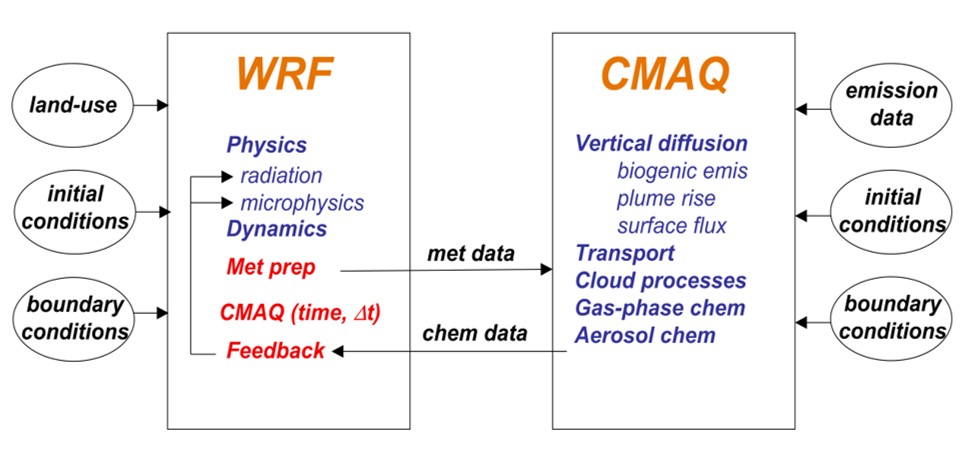To ensure human health and environmental protection from pollutants like ozone and particulate matter, air quality standards have been set by national authorities worldwide. Measurements are one way of gathering information regarding the exposure of people and ecosystems to pollutants, but a more complete picture in space and time is often needed. Air quality models can provide this information for the past, present, or future. Meeting the national standards often requires the use of controls on sources of air pollutants. The complex nature of air pollution scenarios requires control strategies to be effective for a variety of air pollutants, geographic regions, and scales. The design of these control strategies is guided by comprehensive air pollution modeling systems, which are applied to assess the ability of various control strategies to improve air quality in a cost-effective manner.
Numerical air quality models simulate the emissions, chemistry and physics of the atmosphere. The Community Multiscale Air Quality (CMAQ) model, used in the AWMA Lab, is a numerical air quality model that relies on scientific first principles to predict the concentration of airborne gases and particles, and the deposition of these pollutants back to Earth’s surface. Given that CMAQ includes information about the emissions and properties of compounds and classes of compounds, it can also be used to inform users about the chemical composition of a mixture of pollutants. This is particularly useful when measurements only give insight into aggregate details, like total particulate mass.

The Sparse Matrix Operator Kernel Emissions (SMOKE) processor is used in the AWMA lab for estimating the magnitude, location, and temporal variability of pollution sources and preparing the emissions inputs to CMAQ from emissions inventories. The Biogenic Emission Inventory System (BEIS) is used within the SMOKE processor to estimate biogenic emissions.
In the AWMA Lab, CMAQ runs both in a standalone way using archived meteorological outputs from the Weather Research and Forecasting (WRF) numerical weather prediction model and coupled with the WRF model allowing interactions between chemistry and weather to be consider.
